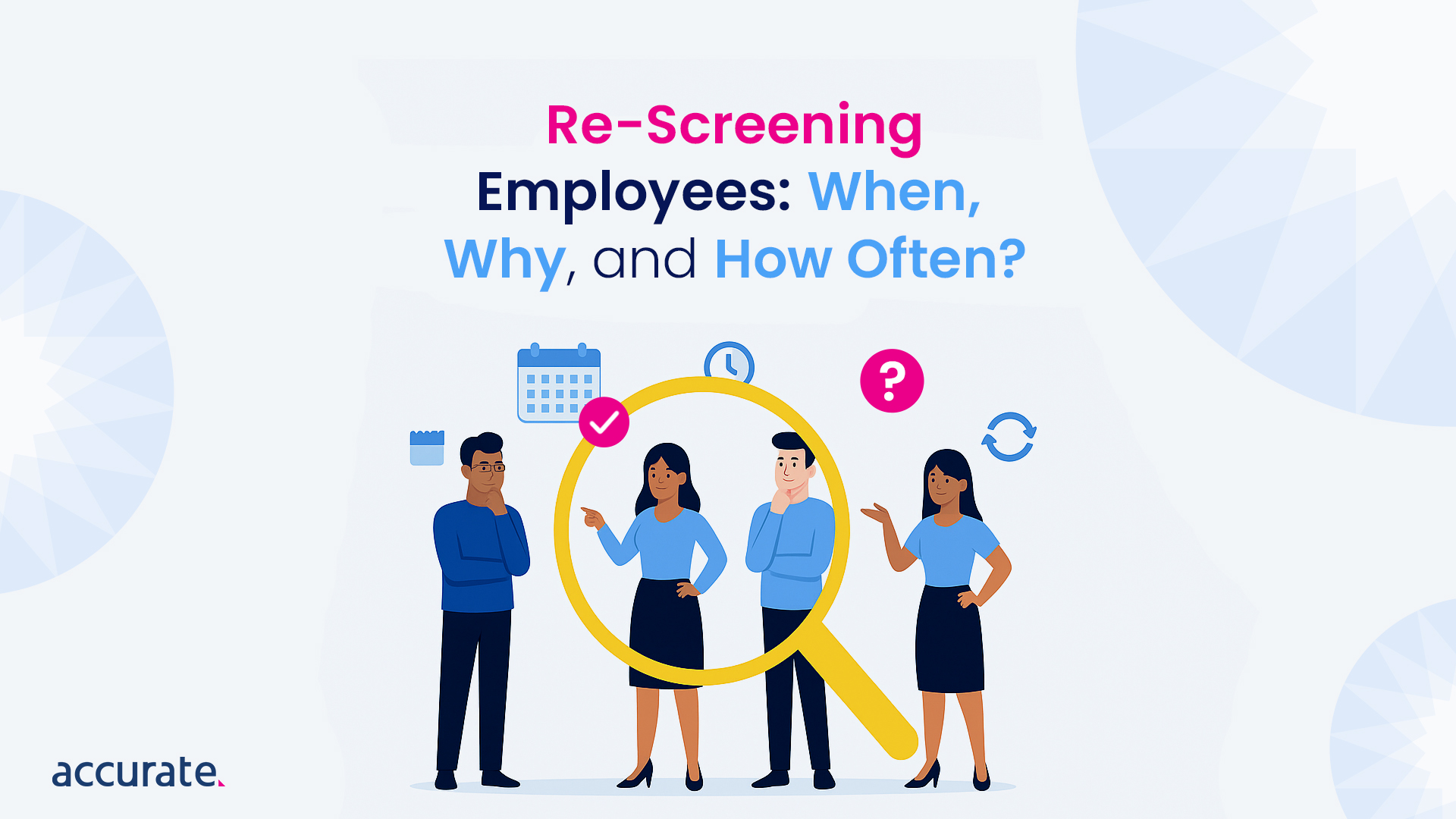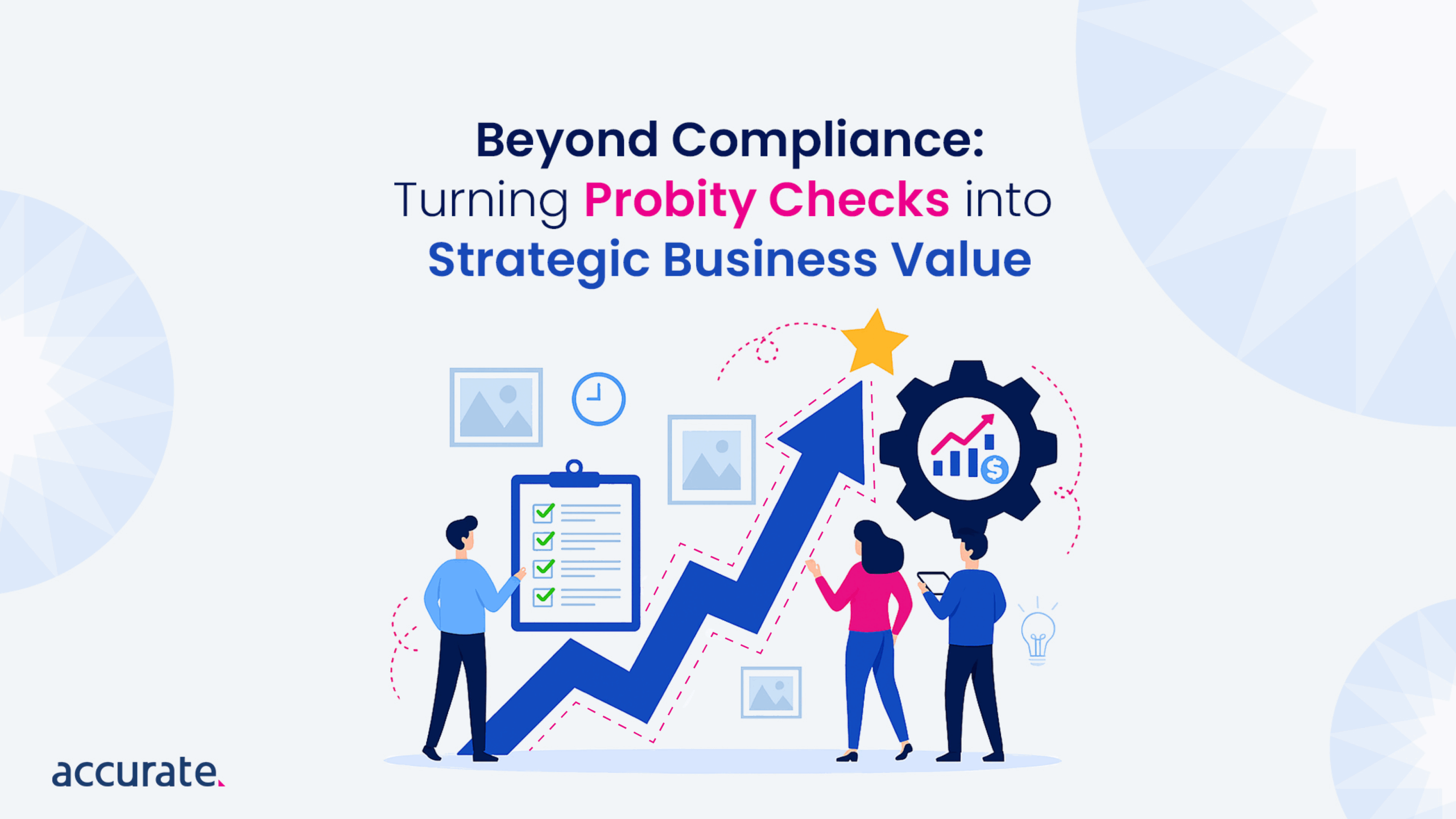Attracting and keeping the right people is one of the biggest challenges facing Australian businesses today. With unemployment sitting at low levels and many industries competing for a limited talent pool, business owners, HR managers, and hiring managers are under constant pressure to find ways to stand out.
An Employee Value Proposition, or EVP, is often seen as the solution.
It defines what makes a workplace attractive to potential employees and helps an organisation differentiate itself from competitors. At the same time, pre-employment screening is usually treated as a compliance requirement or a background detail in the hiring process.
The reality is that screening plays a direct role in how authentic and believable an EVP feels to candidates.
When a company says it values integrity, culture, and safety, candidates want to see that these values are not just written down but applied consistently. Screening provides the practical tools to ensure those promises are upheld.
This article explores how EVP development and screening intersect, and why screening outcomes such as trust, compliance, and cultural fit can make or break the credibility of your EVP.
What is an EVP and Why Does It Matter?
An Employee Value Proposition is the collection of rewards, opportunities, and experiences that an employer offers in return for an employee’s skills and commitment. It answers the simple but powerful question: “Why should someone want to work here instead of somewhere else?”
An EVP is broader than salary or benefits. It covers things like:
- Career development opportunities
- Flexibility and work–life balance
- The company’s mission and values
- Workplace culture and leadership style
- Recognition and wellbeing support
Some people confuse EVP with employer brand. The difference is that the EVP is the promise made to employees, while the employer brand is how that promise is perceived internally and externally.
When crafted well, an EVP helps attract stronger candidates and reduces turnover. People who believe their workplace delivers on its promises are more engaged and committed. The flip side is that if employees experience a gap between what is promised and what actually happens, trust is lost. An EVP that feels like marketing spin without substance can quickly damage a company’s reputation.
The Role of Pre-Employment Screening in Hiring
Pre-employment screening refers to the process of verifying a candidate’s background, qualifications, and suitability before making a final hire. In Australia, this can include:
- Identity verification
- Police checks and Working With Children checks (where relevant)
- Employment and reference checks
- Qualification and licence verification
- Right-to-work checks
For some organisations, these checks are mandatory, particularly in sectors like education, healthcare, and financial services. For others, screening is seen as just another step before onboarding. But its impact is far greater than ticking a compliance box.
A company’s screening process communicates volumes to candidates. A thorough, professional, and transparent approach signals that the organisation values integrity and safety. This can reassure candidates, especially in industries where trust and responsibility are vital.
For example, an aged care provider that highlights its robust screening practices demonstrates its commitment to resident safety. This reassurance aligns directly with the EVP, making the company more attractive to applicants who value purpose and ethical standards.
Screening is not just about avoiding bad hires. It is about showing candidates and employees that the organisation upholds high standards and lives the values it promotes in its EVP.
Building Trust and Safety through Screening
Trust is one of the strongest foundations of a compelling EVP. Many organisations say they offer a safe and supportive workplace, but candidates look for evidence that those claims hold true. Background checks are one way to provide that evidence.
By conducting checks on criminal history, verifying identity, and ensuring candidates have the right clearances, businesses create a safe environment for their teams. Existing staff gain confidence that new colleagues have been properly vetted.
This builds trust in management and reassures employees that their wellbeing is genuinely valued.
Trust is not only internal. Customers, clients, and external stakeholders often hear about a company’s hiring standards. For candidates, this translates into confidence that they are joining a workplace that prioritises safety and reliability. For instance, a financial services firm that claims “integrity is at our core” demonstrates authenticity by screening for fraud or credit issues before making offers.
Screening strengthens an EVP by turning promises into actions. A company that values trust and safety can back up its words with clear, consistent practices that candidates experience from the very beginning of the hiring journey.
Compliance and Integrity: Upholding Your EVP Promises
A large number of companies include values like ethics, integrity, or professionalism in their EVP. These words hold little weight unless they are backed by action. Screening plays a direct role in proving that the business genuinely stands by those principles.
Credential and reference checks help confirm that candidates have the qualifications and experience they claim. This prevents the risk of hiring someone whose background does not match the role, which can otherwise harm team performance and weaken confidence in leadership.
For example, in sectors such as healthcare or engineering, failing to verify professional licences could expose a business to legal or reputational issues.
In regulated industries, compliance checks are not optional. Roles in finance, aged care, education, or aviation come with strict requirements for clearances and registrations. Meeting these standards through screening shows candidates that the company operates with transparency and respect for the law. It also reassures them that colleagues have been held to the same level of accountability.
Integrity is not just a statement in a company handbook. Screening provides the framework to make sure every new hire represents the standards the business claims to live by. This consistency helps protect both the company’s reputation and the credibility of its EVP.
Cultural Fit: Hiring Employees Who Live the EVP
Most EVPs highlight the culture of the workplace, from teamwork and innovation to inclusivity and respect. For these promises to feel real, new employees must contribute to and reinforce that culture rather than work against it.
Screening can be expanded beyond background checks to include cultural fit assessments. Structured behavioural interviews, value-based questions, and reference checks are effective ways to evaluate whether a candidate’s approach aligns with the company’s values.
In some cases, businesses use psychometric or personality assessments to get further insight into a candidate’s work style.
When cultural fit is ignored, problems can arise. For example, a company that promotes collaboration in its EVP may struggle if it hires someone who prefers working in isolation or resists teamwork. Even if that person is technically skilled, the mismatch can reduce morale and productivity.
It is important to remember that cultural fit is about alignment with values, not uniformity. A strong EVP often promotes diversity, so screening should support that goal. The focus should be on whether a candidate respects and contributes to the cultural environment, not whether they share the same background or personal interests as existing employees.
When hiring aligns with culture, the EVP becomes more than a message. Candidates experience the promised environment in their day-to-day work, which reinforces authenticity and strengthens the employer brand.
Integrating Screening into Your EVP Strategy
EVP development and screening should not be treated as separate exercises. They work best when considered together, creating a consistent experience for candidates and employees.
One way to achieve this is by aligning your screening criteria with your EVP values. If your EVP includes accountability, your screening process can include reference questions about reliability and ownership of work.
If safety is a stated value, police checks or licence verifications become more than compliance, they directly support the EVP message.
Engaging HR teams, hiring managers, and even existing employees in EVP discussions can help identify what screening measures have historically produced strong hires. This ensures the EVP reflects real workplace qualities rather than abstract ideas.
Being transparent with candidates about your screening process builds trust early. Job postings or interviews that explain “we conduct checks to ensure a safe, positive workplace” signal honesty and reinforce EVP promises. Candidates often appreciate knowing why checks are in place and how they protect both the business and its people.
Candidate experience also matters. A screening process that drags on without updates or asks for unnecessary details can conflict with an EVP that promises respect or care for employees. Using efficient screening systems and keeping candidates informed shows that the business is committed to its values even before someone is hired.
Both EVP and screening should evolve. Reviewing outcomes such as retention rates or cultural alignment of new hires can highlight areas to adjust. This continuous improvement ensures the EVP remains authentic and the screening process continues to deliver employees who reflect it.
Benefits of Aligning Screening with Your EVP
When EVP and screening are aligned, the organisation gains more than just compliance. It creates a workforce that reflects the company’s promises and values.
Some of the key benefits include:
- Better quality hires: Candidates are both technically qualified and aligned with company values, reducing the risk of poor performance or turnover.
- Higher morale and engagement: Employees feel confident that their colleagues share the same standards, creating stronger team spirit.
- Stronger reputation: A business that consistently hires with integrity and care builds a brand that candidates, clients, and partners respect.
- Competitive edge: A proven EVP backed by consistent screening can be showcased in recruitment, giving the organisation an advantage in attracting talent.
Here’s a side-by-side look at outcomes with and without aligned screening:
| Workplace Factor | Without Thorough Screening | With Thorough Screening |
| Quality of hires | Mixed results; unqualified or mismatched hires reduce performance | Qualified hires who align with values strengthen performance |
| Workplace safety and trust | Potential risks from unchecked hires reduce confidence in leadership | Safe environment where employees trust leadership and colleagues |
| Cultural alignment | Values eroded if new hires clash with culture | Strong culture reinforced by hires who reflect EVP |
| Brand reputation | Risk of reputational damage from poor hires | Reputation for integrity attracts both talent and clients |
| Retention and engagement | High turnover caused by poor fit | Strong retention as employees thrive in a consistent culture |
When screening reinforces EVP promises, the organisation doesn’t just say it has strong value, it shows it through every hire.
Perfect, let’s finish the blog with the Key Takeaways and the FAQs section.
Key Takeaways
- An EVP is only believable if the company’s hiring practices back it up. Screening ensures the EVP is grounded in reality rather than being a marketing promise.
- Trust and safety are reinforced when screening filters out risks and ensures new hires meet workplace standards. This creates confidence internally and externally.
- Compliance checks protect both the organisation and its reputation, showing candidates that the company is serious about integrity and professionalism.
- Cultural fit assessments help bring in employees who live the EVP values day to day, preventing disconnection between what is promised and what is experienced.
- Aligning screening with EVP values produces better quality hires, stronger team morale, improved retention, and a brand reputation that attracts talent.
- Transparent and respectful screening processes improve candidate experience and make EVP messaging more credible from the very start of recruitment.
FAQs
Q1: What exactly is an Employee Value Proposition (EVP) and how is it different from our employer brand?
The EVP is the defined promise of what an organisation offers its employees – things like growth opportunities, culture, benefits, and values. The employer brand is how this promise is perceived internally and externally. The EVP is the foundation, while the employer brand is the reputation built around that foundation.
Q2: How does pre-employment screening make an EVP more believable to candidates?
Screening ensures that new hires reflect the standards the business claims to value. If an EVP highlights honesty, collaboration, or safety, screening practices like reference checks and police clearances confirm that employees actually meet those expectations. Candidates can see that the business applies its values consistently, which strengthens trust in the EVP.
Q3: Could a rigorous screening process put good candidates off applying?
When designed and communicated well, screening is rarely a deterrent. Most strong candidates expect some level of background check. Explaining upfront why the process exists, for example, to create a safe, reliable workplace, helps candidates understand that screening is in their best interest too. Efficiency matters as well; delays or poor communication during screening can frustrate candidates and conflict with EVP promises around respect or care.
Q4: How do we screen for cultural fit without creating bias?
The focus should be on alignment with company values rather than personal similarities. Structured behavioural interview questions, value-based assessments, and reference checks provide more objective insights. Screening for cultural fit is about ensuring that candidates respect and contribute to the existing culture, not about excluding people with different backgrounds. This approach supports both EVP promises and diversity goals.
Q5: Should we inform candidates about screening early in the process?
Yes. Being upfront about screening demonstrates honesty and reduces the risk of surprises later. Mentioning checks in job ads or early interviews helps set expectations and communicates that the organisation is committed to trust and safety. Framing screening as a positive (something that protects employees and reinforces company values) makes it a natural extension of the EVP.



